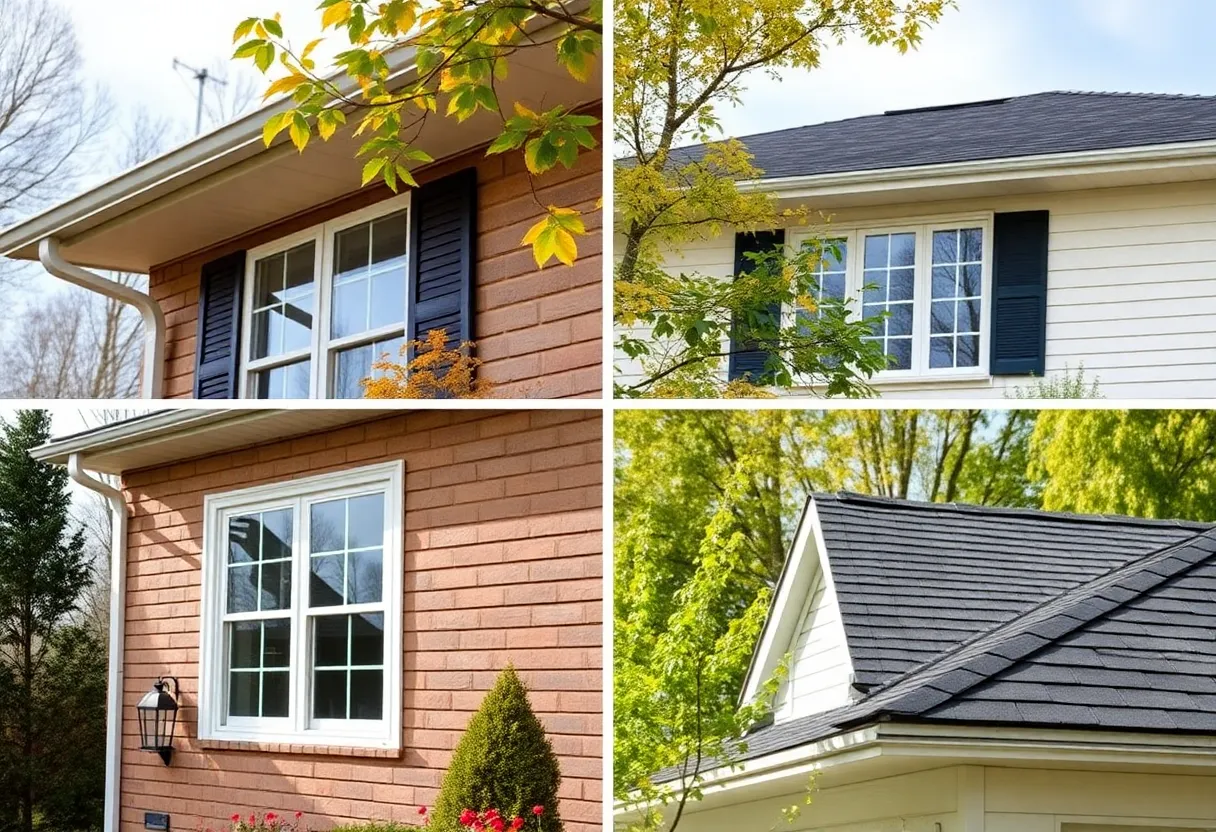What Are the Most Effective Tips for DIY Home Maintenance in Any Season?
Effective DIY home maintenance is essential for preserving property value, ensuring safety, and reducing long-term repair costs. Every season presents unique challenges that require tailored approaches. From winter freezes to summer heat, mastering maintenance tasks can mitigate damage and enhance comfort throughout the year.
Understanding the Core Principles of Year-Round Home Maintenance
Successful DIY maintenance hinges on understanding foundational principles. These include regular inspections, proactive repairs, and seasonal adjustments. The goal is to prevent issues before they escalate, thereby avoiding costly professional interventions.
Prioritize inspection and preventive actions. These form the backbone of effective home upkeep. Routine checks reveal early signs of problems, enabling timely solutions. Document maintenance schedules to track tasks across seasons and avoid neglect.
Essential Maintenance Tasks for Any Season
Some tasks are fundamental regardless of weather conditions. Implementing these can significantly improve home resilience and performance.
1. Regular Inspection and Cleaning
Inspections should be systematic and comprehensive. Check for cracks, leaks, or mold. Clean gutters and downspouts to prevent water damage. Ensure HVAC filters are clean and functioning correctly.
Cleaning enhances energy efficiency and indoor air quality. Remove debris from vents, window tracks, and filters. Keep appliances running smoothly with scheduled maintenance.
2. Check and Repair Seals and Insulation
Proper sealing prevents air leaks and improves energy efficiency. Examine window and door seals, replacing worn weatherstripping. Insulate exposed wiring or ductwork as needed to maintain thermal comfort.
Thorough sealing reduces utility bills and minimizes draft-related issues.
3. Maintain Plumbing and Drainage Systems
Preempt plumbing failures by checking for leaks, drips, or corrosion. Bleed radiators that may have trapped air. Clear drains and pipes to prevent blockages.
In colder months, insulate exposed pipes to prevent freezes. In warmer seasons, ensure drains are free of obstructions to handle increased water flow.
Seasonal Maintenance Tips
Each season requires specific maintenance to address environmental stressors. Implement these targeted strategies for optimal home performance.
Spring
Spring is the ideal time to prepare your home for the upcoming warmer months and prevent winter-related damage.
- Inspect Roof and Gutters: Repair damaged shingles and ensure gutters are clear for effective drainage.
- Service HVAC System: Change filters and schedule professional tune-ups if necessary.
- Check Exterior Surfaces: Examine siding, paint, or brickwork for cracks or deterioration. Touch up or repair as needed.
- Landscape Maintenance: Trim trees and bushes away from the house to prevent damage and enhance airflow.
Summer
Summer maintenance aims to keep the home cool, prevent pest invasions, and prepare for storms or high winds.
- Maintain Cooling Systems: Schedule AC servicing, clean filters, and seal ductwork to maximize efficiency.
- Monitor Exterior Paint and Siding: Touch up peeling paint to protect against moisture penetration.
- Inspect Windows and Doors: Ensure seals are intact to prevent cooling loss and water ingress.
- Trim Vegetation: Keep grass short and prune plants that may block ventilation or cause damage during storms.
Fall
Fall readiness reduces winter-related risks and prepares for holiday season decorations.
- Gutter Cleaning: Remove fallen leaves and debris to prevent ice dams and water overflow.
- Seal Windows and Doors: Check for drafts, reseal or replace weatherstripping.
- Inspect Heating Systems: Service furnaces and boilers to ensure safe operation in winter.
- Check Roof and Chimney: Repair any damage and clean chimneys to prevent fire hazards.
Winter
Winter maintenance focuses on protecting the home from freezing temperatures and snow or ice accumulation.
- Insulate Pipes: Wrap exposed pipes in insulation to prevent freezing and bursting.
- Inspect Heating Systems: Confirm that furnaces, fireplaces, and heat pumps are functioning optimally.
- Clear Snow and Ice: Shovel driveways and walkways regularly. Use de-icing agents to prevent slips.
- Seal Drafts: Use draft stoppers or insulate window frames to conserve heat.
Advanced Tips for DIY Home Maintenance
Beyond routine tasks, certain advanced practices can extend the lifespan of home components and reduce expenses.
1. Use Technology for Monitoring
Install smart sensors for humidity, temperature, or water leaks. Immediate alerts enable prompt action. Remote monitoring enhances responsiveness, especially during absences.
2. Maintain HVAC and Electrical Systems
Periodic professional inspections improve safety and efficiency. Replace filters every 1-3 months. Check electrical panels for corrosion or loose connections.
Ensure smoke and carbon monoxide detectors are operational. Test alarms monthly and replace batteries as needed.
3. Upgrade Components Responsibly
Invest in energy-efficient appliances and fixtures when replacements are necessary. Proper selection yields long-term savings and environmental benefits.
Prioritize repairs that enhance energy conservation, such as upgraded insulation or high-efficiency windows.
Safety and Sustainability Considerations
Safety is paramount during DIY tasks. Use appropriate tools, wear protective gear, and adhere to electrical codes. When in doubt, consult qualified professionals.
Sustainability involves reducing waste and conserving resources. Recycle used materials. Opt for eco-friendly cleaning and maintenance products. Implement water-saving fixtures and energy-efficient lighting.
Common Mistakes to Avoid in DIY Home Maintenance
Prevent these pitfalls for more effective upkeep:
- Neglecting regular inspections, leading to overlooked issues.
- Overlooking safety precautions, risking injury or damage.
- Ignoring manufacturer instructions, risking improper repairs or voiding warranties.
- Postponing repairs, allowing small problems to escalate.
- Using inappropriate tools or materials, compromising repair quality.
Conclusion
Effective DIY home maintenance hinges on understanding the unique needs of each season and performing targeted, preventive actions. Regular inspections, timely repairs, and leveraging technology are core strategies. Emphasizing safety and sustainability ensures long-term home integrity and environmental responsibility.
Adopt these strategies across all seasons to maintain a resilient, efficient, and safe dwelling — ultimately saving time, money, and effort in the long run.
Author: STAFF HERE CLEVELAND WRITER
The CLEVELAND STAFF WRITER represents the seasoned team at HERECleveland.com, your premier source for actionable local news and information in Cleveland, Cuyahoga County, and beyond, delivering "news you can use" with in-depth coverage of product reviews for personal and business needs, local business directories, politics, real estate trends, neighborhood insights, and state news impacting the region—backed by years of expert reporting and robust community input, including local press releases and business updates, while providing top reporting on high-profile events like the Rock and Roll Hall of Fame inductions, Cleveland International Film Festival, and holiday parades, alongside key organizations such as the Cleveland Clinic, Cleveland Orchestra, and Great Lakes Science Center, plus leading businesses in manufacturing and healthcare like Sherwin-Williams and University Hospitals, and as part of the broader HERE network including HEREDayton.com, offering comprehensive, credible insights into Ohio's vibrant landscape. HERE Cleveland HERE Dayton





